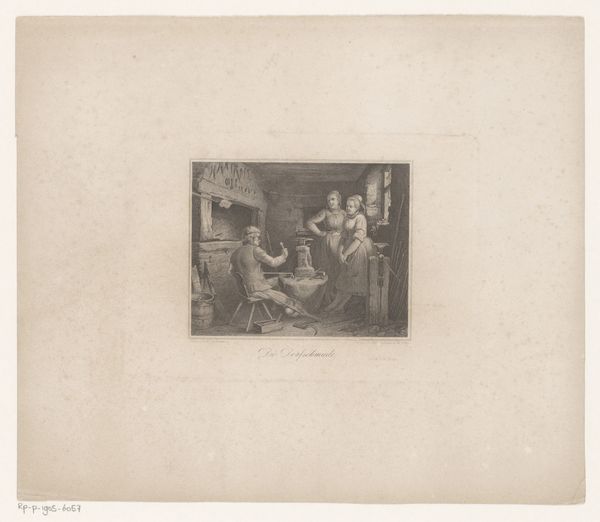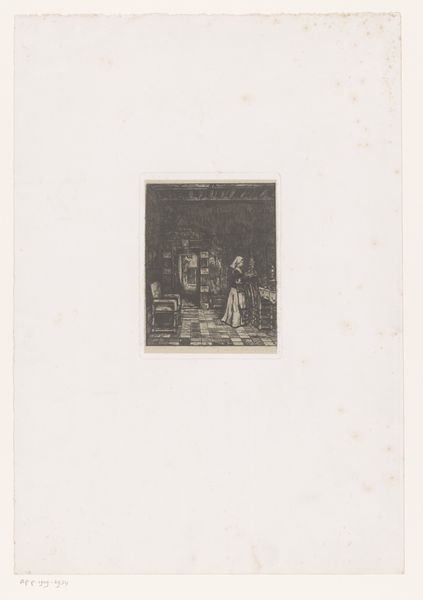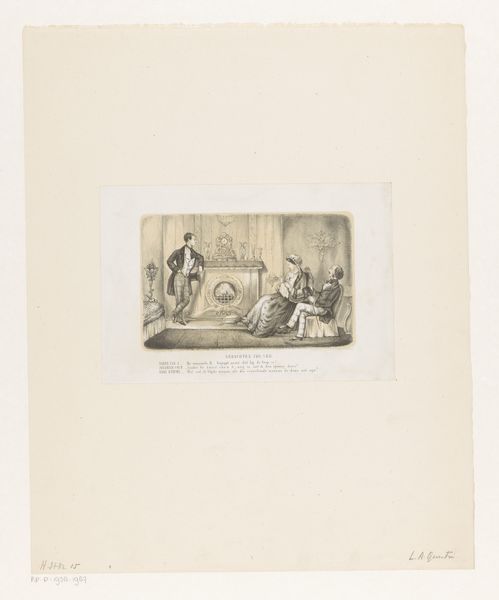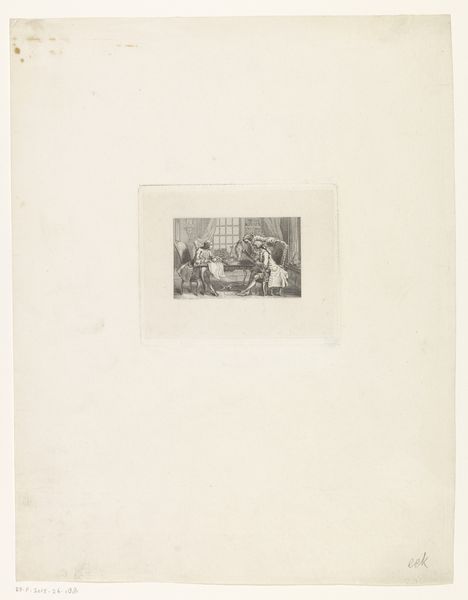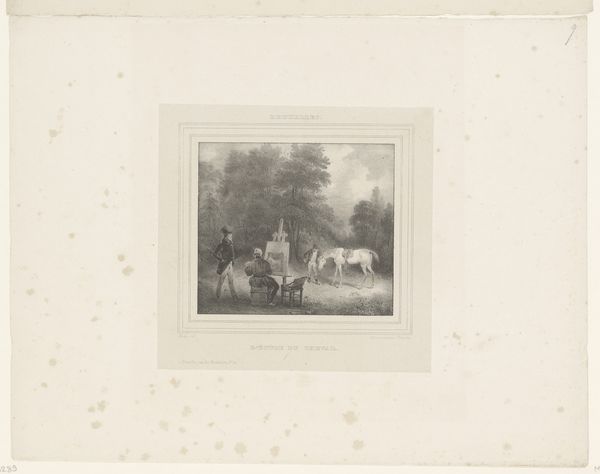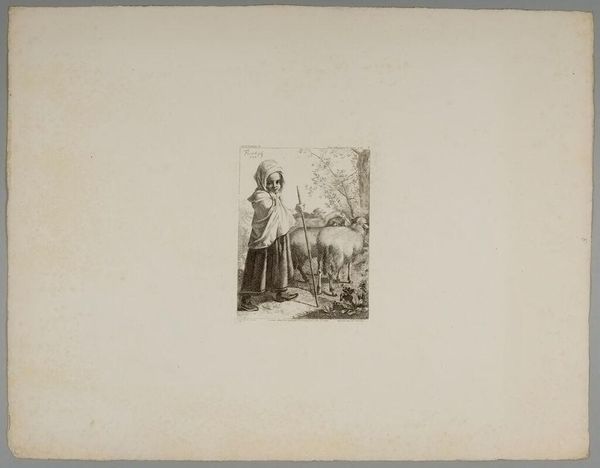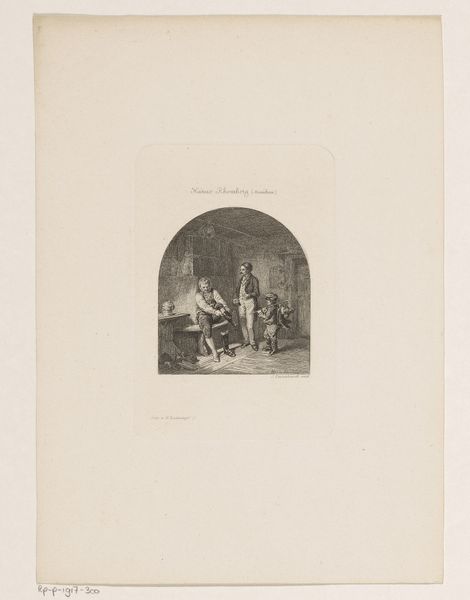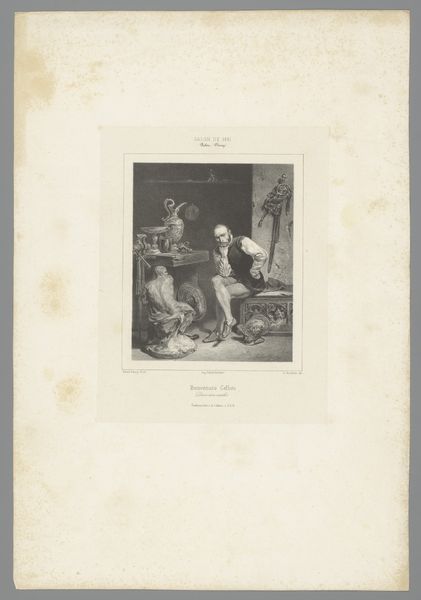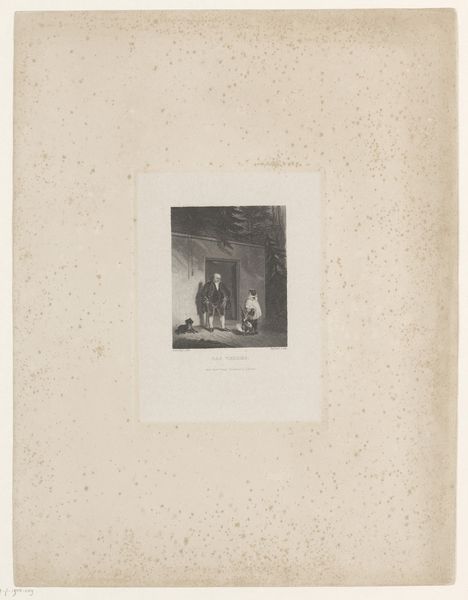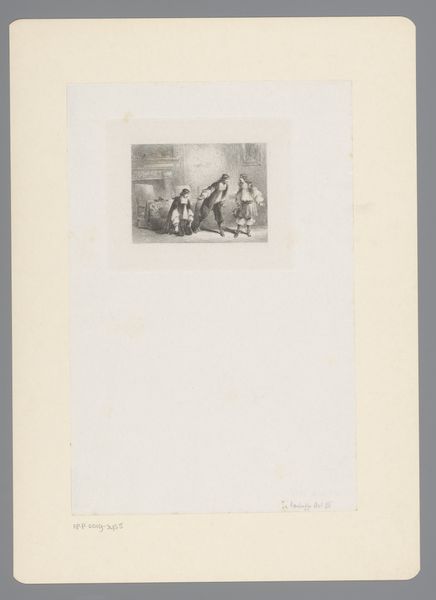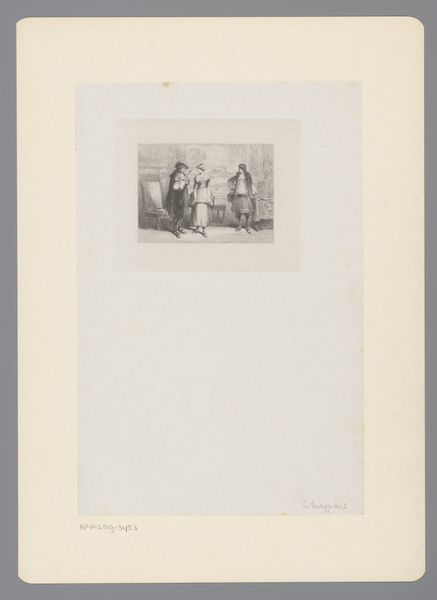
print, engraving
#
narrative-art
# print
#
figuration
#
romanticism
#
line
#
genre-painting
#
engraving
Dimensions: height 249 mm, width 338 mm
Copyright: Rijks Museum: Open Domain
Curator: Here we have Nicolas Toussaint Charlet's 1830 engraving, "Twee kinderen ontvangen Pulcinella," which translates to "Two children receiving Pulcinella." It’s currently held at the Rijksmuseum. Editor: What strikes me first is how tiny this image is. The delicacy of the lines is pretty striking—a captured moment that seems incredibly fleeting and theatrical all at once. Curator: Absolutely. The theatricality is key. Charlet was known for his romantic and somewhat idealized depictions of everyday life. What you're seeing is a genre scene with a narrative element. This print depicts two children seemingly welcoming the character Pulcinella into their home. Editor: So, Pulcinella... the trickster. He’s almost always got that mask, right? Part of the commedia dell'arte tradition. How might children seeing him in the 1830s be different from how they might perceive this character today? Curator: Well, Pulcinella then would have been a more familiar figure—a popular character from street theatre. These children likely are offering shelter or hospitality to a traveling performer; perhaps embodying kindness but maybe also naive trust. Seeing it now, in light of contemporary understandings of, say, class and performativity, invites a layer of critical engagement absent back then. I mean, is it *really* hospitality if there's a power imbalance? Editor: That’s a great point. This also reminds me how gender dynamics work, too, and if we only get a slice, even that single slice can tell so much. In looking closer, it reads to me as a gesture of care—as the children's faces do light up, but they look also slightly hesitant at this moment of encounter—a glimpse of kindness amid uncertainty? Curator: I'm taken with your perception here. It is a small slice that feels as large as it is minuscule. I can almost hear them breathing. The stark blacks and whites further convey a kind of raw emotion as well, like that sense of not really knowing where one is going in a world too big for you... which maybe the children do understand to some extent, actually. Editor: That's really beautiful. This encounter now makes me wonder, actually: who are we letting into our house—literally and figuratively— and why? And maybe it should provoke in all of us what responsibility feels like when the "Pulcinella" figure seeks our support. Thank you for helping me arrive at new meaning today. Curator: My pleasure! These little images, after all, are mirrors. We see ourselves, and the echoes of history, in their delicate surfaces. It's what makes art such an alive endeavor, isn’t it?
Comments
No comments
Be the first to comment and join the conversation on the ultimate creative platform.
